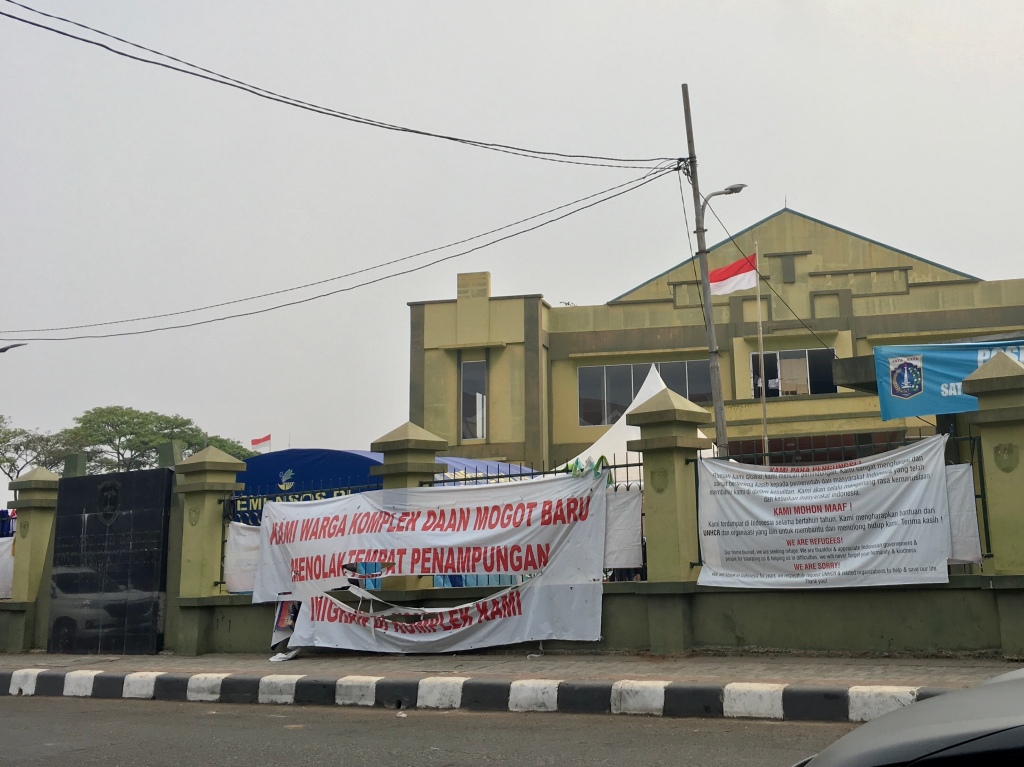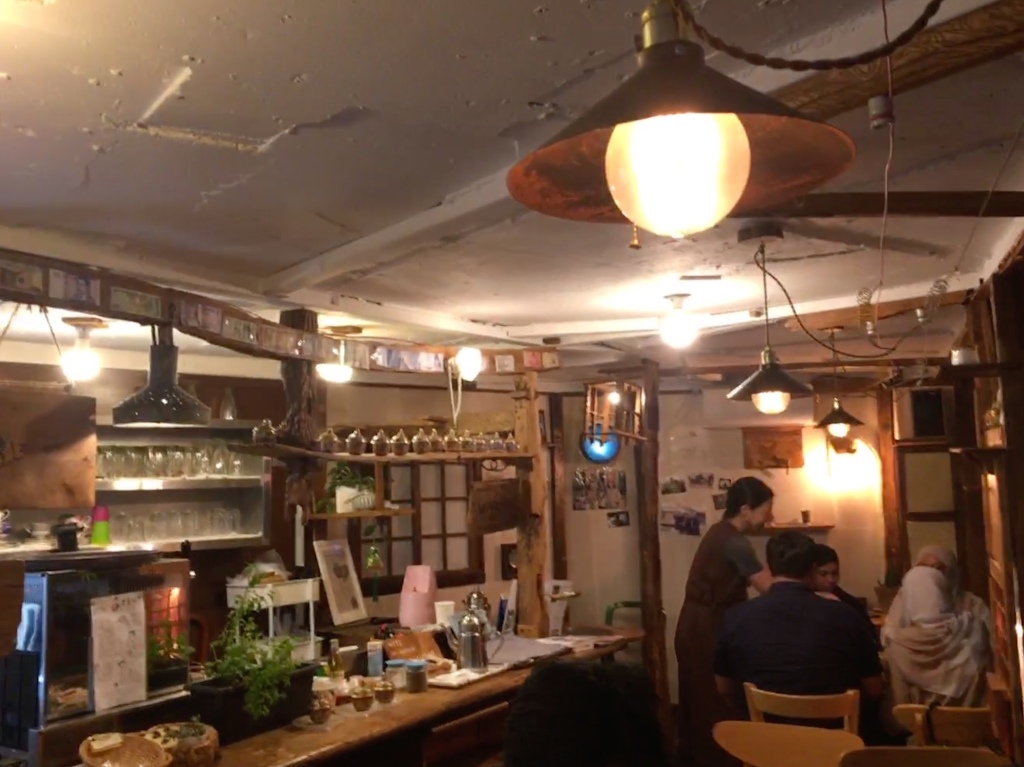“I feel less than a human being,” says Mozhgan Moarefizadeh, an Iranian refugee in Indonesia. A smart, beautiful 26-year-old woman, Mozhgan had to flee her home country with her family due to political reasons. Their destination was Australia. What they thought would be a short transit in Indonesia turned out to be a long, 6-year period of living in limbo.
Mozhgan’s story is only one of thousands. There are currently around 14,000 refugees and asylum seekers living in Indonesia, coming from war-torn and conflict-prone countries around the world. Most of them hail from Afghanistan, Somalia, Myanmar, and Iraq. Most of them were also aiming to reach Australia. However, increasingly hostile anti-asylum seeker policies in traditional resettlement countries including Australia have significantly impacted refugees in Indonesia.
Australia no longer provides resettlement for refugees who arrived in Indonesia after June 2014; meanwhile, the US has slashed its resettlement quota by more than half – from around 85,000 in 2016 to a maximum cap of 18,000 in 2020. Consequently, refugees in Indonesia have been hit hard. While previously their waiting time to receive resettlement would have been around 3–4 years, the UNHCR has now told many refugees that they could be waiting up to 25 years. Even then, there is no guarantee that they will be resettled. This situation has exacerbated mental health issues among the refugee community, such as depression and even suicide.
Indonesia itself is a non-signatory to the 1951 UN Refugee Convention, and therefore is considered as a transit country. Because of this, while it tolerates and acknowledges the existence of refugees and asylum seekers in Indonesia through a presidential regulation, it does not provide them with most basic rights, including the right to education, accessible healthcare, and livelihoods. Around 8,300 refugees and asylum seekers are supported by the International Organization of Migration (IOM) in Indonesia, which provides them with basic accommodation and a small monthly cash allowance. However, the IOM is unable to assist everyone, leaving more than 5,000 people without support. This means that they are forced to self-fund all their living expenses in Indonesia, relying on savings or money from family abroad to sustain their lives.
Yet not all refugees are lucky to have family that can support them. When their savings run out, they are left with no option but to depend on aid and assistance from others. This situation caused hundreds of refugees, including women and children, to sleep rough on the streets of Jakarta beginning in mid-2017. More recently, around 300 refugees were camping in front of the office of the UNHCR in central Jakarta, which for perhaps the first time, saw refugees make national headlines in Indonesia.
No longer able to turn a blind eye, the Indonesian government finally relocated more than 1,000 refugees, including 300 children, to an empty former military building in West Jakarta. In the emergency shelter, refugees were provided with meals twice a day as well as other aid and donations. The living arrangements and sanitation were poor, however, and residents from the local neighbourhood strongly opposed the presence of refugees in the area.

As a developing state which tends to view refugees as an unwanted burden, this was the government’s first positive action in assisting refugees. That should not go unnoticed. However, due to financial limitations (neither the national nor local governments have allocated budgets for refugee assistance), all refugees and asylum seekers in the shelter were instructed to leave the building after 2 months with only limited assistance from the UNHCR.
With nowhere to go, this has caused many desperate refugees to return to sleeping on the streets. Dozens of refugees, sometimes hundreds, every week stage protests and demonstrations in front of the UNHCR and IOM offices throughout Indonesia, pleading for resettlement and for the international community to show mercy. Their pleas fall on deaf ears. This situation demonstrates the immense difficulties of the lives of refugees in Indonesia.
The 2019 May 18 Academy on the Politics and Economy of Refugees held in Gwangju from August 23 – September 3 was a valuable opportunity for me to learn more about the situation of refugees in South Korea. While there is a major difference between Indonesia and South Korea in the aspect that the latter is a party to the UN Refugee Convention, I realised that both countries face the same issue of strong opposition towards the assistance and acceptance of refugees and asylum seekers. Many of these sentiments stem from the same factors: fear and ignorance.
Most Indonesians do not know about refugees. They do not know who refugees are, why they are in Indonesia, and why they left their home countries. Many are unable to differentiate between refugees, migrants, and tourists. Many are angered that the government is seen to be assisting refugees due to rumours that all refugees are supported by international NGOs, believing that the government should instead focus on assisting needy Indonesians. Many Indonesians view refugees and asylum seekers with suspicion because of their different physical appearances, languages, and cultural norms.
I heard of similar stories in South Korea – of how South Koreans took to the streets to protest against the influx of Yemeni refugees in Jeju Island; how people feared these Muslim refugees are undercover terrorists; how aid workers have been hounded and harassed merely for helping refugees and asylum seekers. Ironically, decades ago, many people were also forced to flee Gwangju and Jeju Island due to the authorities’ crackdown on protestors during democratic movements, causing many to become refugees and internally displaced people (IDP).
Nevertheless, refugees in South Korea are able to work through a resettlement or humanitarian visa scheme, which provides them with a way to support themselves, be independent, and contribute to society. While we were in Jeju Island as part of the academy, some friends and I had the chance to visit a Yemeni restaurant started by a Yemeni refugee who had married a local. The Yemeni restaurant was the first and only one of its kind on Jeju, becoming a great way to introduce Yemeni culture to South Koreans, while also showing the value of taking refugees into the country.

This is in stark contrast to the situation of those in Indonesia. The government is reluctant to provide refugees and asylum seekers with work rights for fear that it will create a pull factor for other refugees to come to Indonesia. Being the world’s fourth most populous country, there is also a fear that refugees will “steal” much-needed jobs from locals. This fear, while common, is often misplaced and unfounded. The number of refugees in Indonesia is far lower than that of its neighbours in Southeast Asia (more than 100,000 in Thailand and 252,000 in Malaysia), and is less than 0.01% of Indonesia’s total population – meaning that work rights could not have a significant impact on the employment opportunities for Indonesians.
Learning from South Korea and other countries, it is clear that the benefits of providing work rights for refugees and asylum seekers are many. Inclusive policies such as work rights can lead to greater resiliency, less dependency on aid, and better social cohesion in the host community (Miller, 2018). In Uganda, for instance, the policy allowing refugees to support themselves has enabled refugees to become more self-reliant and more capable to contribute better to local communities (Hovil, 2007). Instead of viewing refugees and asylum seekers as a threat, host countries such as Indonesia should view them from another perspective: They can contribute to the local economy by providing work opportunities through entrepreneurship.
The resilience and resourcefulness of refugees in Indonesia, for example, in the face of limitations and restrictions is strongly illustrated by the mushrooming refugee-led initiatives in the country. One such initiative provides information, care packages, and even eye check-up clinics for refugees – one of whose co-founders is Mozhgan, whom I mentioned earlier. Young refugees in Indonesia have also led and run the establishments of numerous learning centres to address the lack of access to education available to refugees. There are at least 8 community learning centres in Jakarta and Cisarua, West Java, providing alternative education for refugee children and adults.
One of the learning centres, HELP for Refugees in Jakarta, is run by a majority of refugee volunteers and teachers, and now has more than 150 students hailing from 12 countries. These community-based learning centres not only function as informal schools, but also as community centres and important support systems for refugees who are unable to live normal lives as we know it.

In Indonesia and elsewhere, young refugees are now taking a more active step in speaking up and advocating for themselves and their rights. Many of the young activists I meet in international forums, including the May 18 Academy, also come from refugee backgrounds or have lived experiences as refugees. It has been a great learning experience for many, including myself, to step back and listen. In today’s world where anti-immigrant sentiments and xenophobia seem to become more and more acceptable, refugee voices and stories matter more than ever. It is thus our duty as activists to not only hold governments accountable but also to support and provide refugee leaders the spotlight they so rightly deserve.
Reference:
- Asia Pacific Refugee Rights Network. (2018). Country Factsheet: Thailand. Retrieved from http://aprrn.info/wp-content/uploads/2018/09/APRRN-Country-Factsheet-Thailand-4-Sept-2018.pdf.
- Krogstad. (2019). Key Facts about Refugees to the U.S. Retrieved from https://www.pewresearch.org/fact-tank/2019/09/27/key-facts-about-refugees-to-the-u-s/.
- Miller, S. (2018). “Assessing the Impacts of Hosting Refugees”. World Refugee Council Research Paper No. 4. August 2018. Retrieved from https://www.cigionline.org/sites/default/files/documents/WRC%20Research%20Paper%20no.4.pdf.
Originally published in ‘Mayzine’ November 2019.
